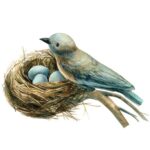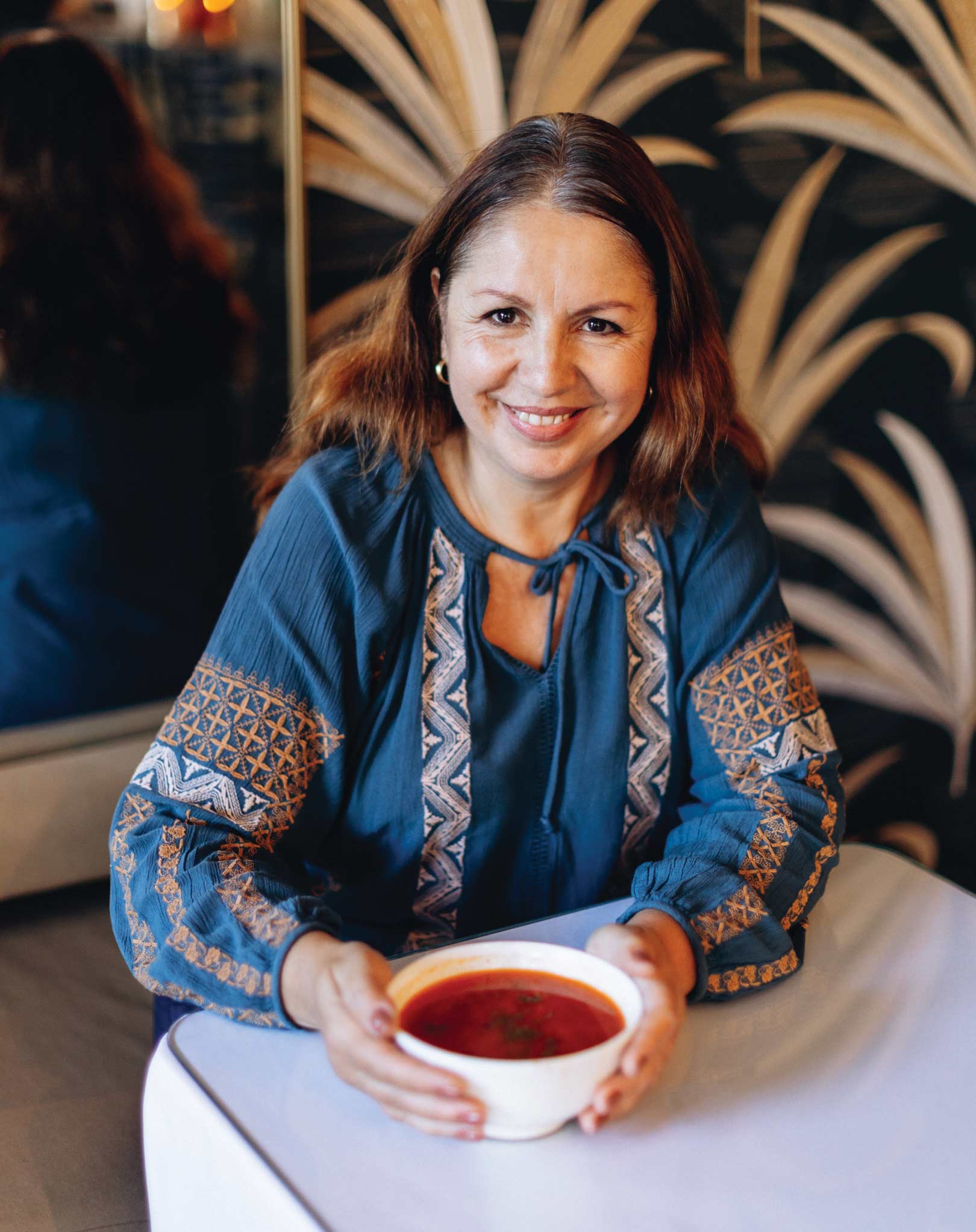
Taisiia Slipenko, Head Chef at Café Lviv
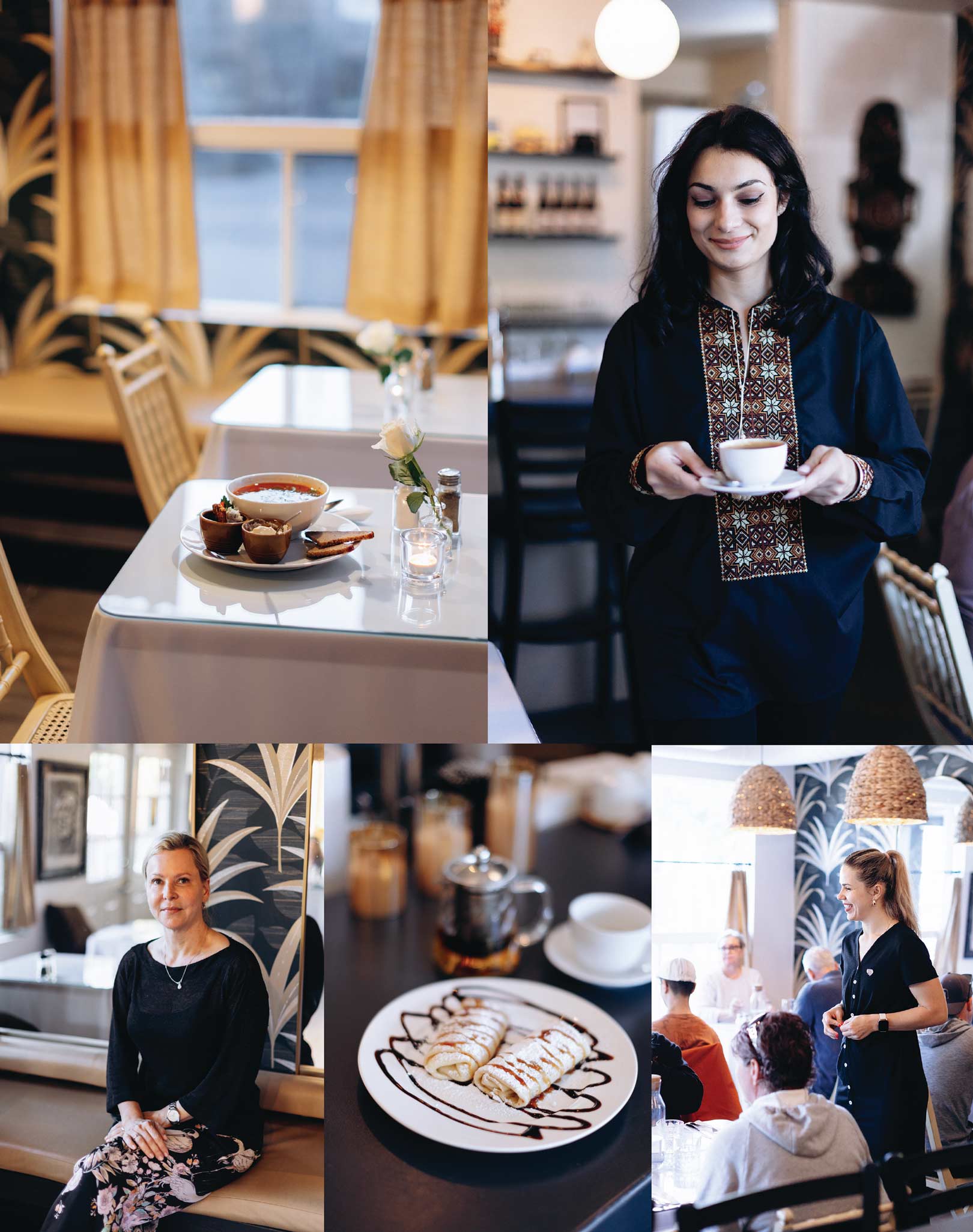
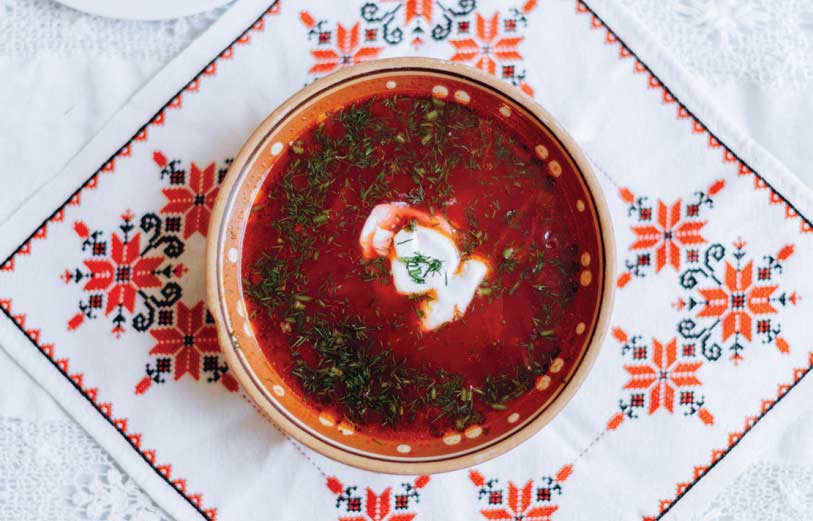
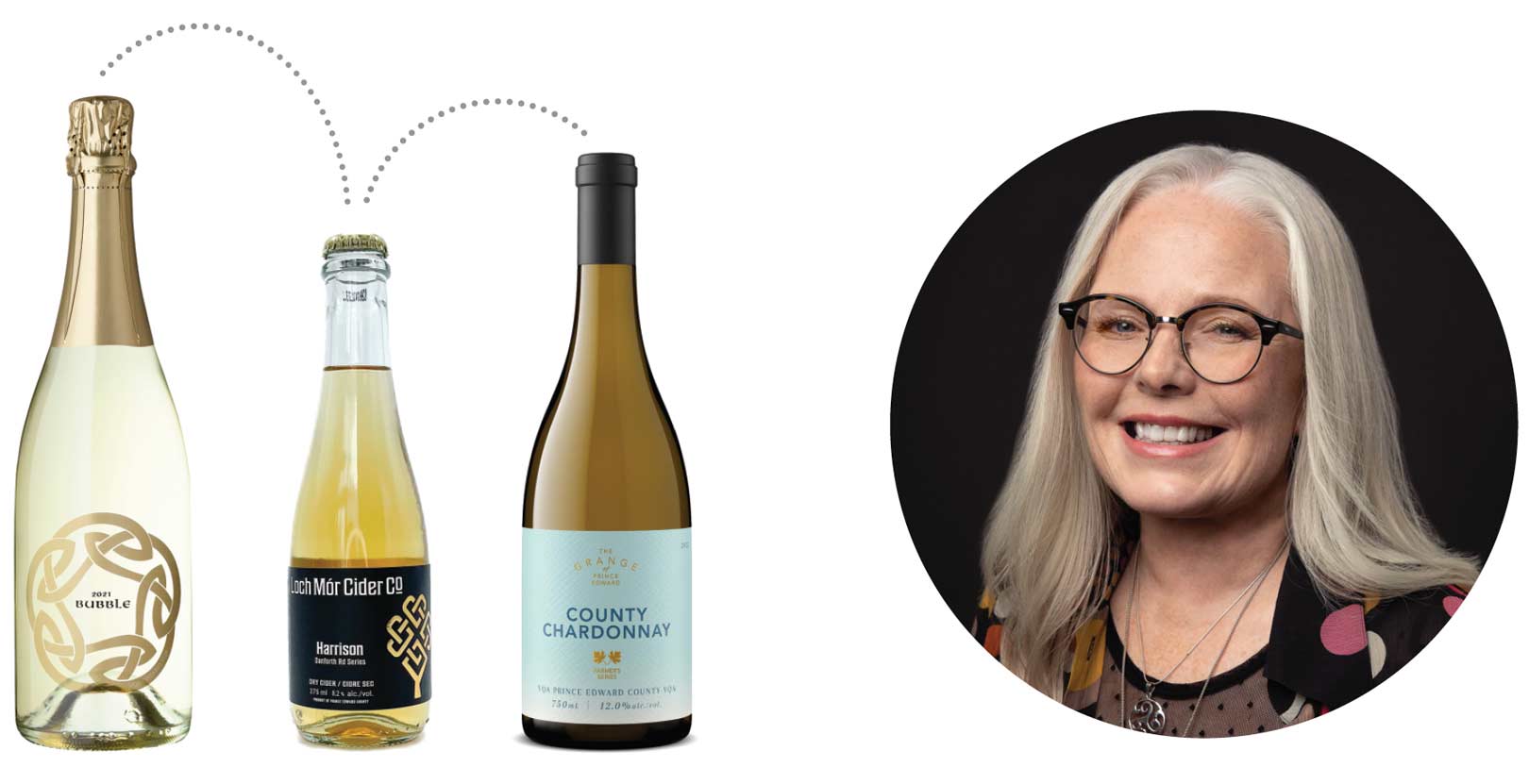
Astrid Young, Sommelier and Wine Director at Merrill House in Picton
At Café Lviv in Port Hope, Ukrainians who fled the war find solace in familiar flavours, a room full of friendly faces, traditional music and wonderful wines.
In February 2022, when Russian bombs started falling on Ukraine, people were still in a state of disbelief. Some hunkered down and waited for the world to start making sense again – as surely it must – and some fled. Some left Ukraine altogether, but some stayed closer to home. Because of its proximity to welcoming and friendly Poland, the city of Lviv became a safe haven and transit hub for Ukrainians fleeing the war; but this relative calm wasn’t to last, as Russian shells finally found the historic city of Lviv in May.
Lviv is home to ancient castles, iconic gold- and verdigris-domed churches, fantastic examples of Baroque, Renaissance, Neo-classical and Art Nouveau architecture, and an old walled city. Its historic city centre has been granted a spot on the UNESCO World Heritage list, and it’s considered the cultural capital of Ukraine. So when partners Olena Hankivsky and Giorgi Kvekveskiri set out to create a place of work, respite, community and safety in Northumberland County for the Ukrainian refugees arriving here, Café Lviv was the obvious name. Café Lviv in Port Hope is a safe haven for the Ukrainians who work here – in the kitchen, behind the bar and on the floor.
Open since November 2022, the 40-seat boîte is also so much more. “We wanted to give these folks a place where family could come together,” says Hankivsky. “And to create something for Port Hope where we could share our Ukrainian culture. But ultimately, we have to make the women who work here feel supported, and we wanted this to become a community hub for all Ukrainian expats. Everyone feels safe and accepted here, with a taste of home.”
Many single women arrived here, leaving husbands and sons of military service age behind, so when Kvekveskiri reached out to them, they couldn’t wait to jump in and get to work renovating the space formerly occupied by Local 90. The women and their families cleaned, painted, and sewed curtains, all under the direction of Port Hope resident and designer, Michael Thomas, who had volunteered at Northumberland for Ukraine Families and generously offered to lead the team on a beautiful shoestring reno.
Taisiia Slipenko, one of two chefs in the Lviv kitchen, had been a clothing technician in Kyiv. Acting on instinct, she drove to Poland in early February – before the invasion – with her husband and kids. “We thought it would be over in a few days,” says Slipenko. “Some of my family stayed behind, and we never went back. I’ve been worried sick; my cousin is in the army. By the time we got here, we were in a state of shock or trauma. I needed something to take my mind off the news, since there was nothing I could do about it.”
Slipenko is a home cook who learned to cook authentic recipes from her mom and her grandmother in a tradititional domed clay wood-fired oven called a pietz. “My speciality is holubtsi (cabbage rolls) and always, always, always borsch!”
Ukrainian food is more complex than it seems. The Canadian palate has been dulled by frozen grocery store potato and orange cheese perogies. Proper Ukrainian varenyky are only good when handmade; the dough is thinner and more delicate, and sometimes filled with sour cherries or sautéed cabbage.
Another of Slipenko’s favourites is Chicken Kyiv, a breast stuffed with fresh dill and shocking amounts of butter, then breaded and roasted or fried – they wouldn’t say. They also wouldn’t reveal how all that butter stays inside. “We have our secrets!” jokes Slipenko.
Folks from beyond Northumberland are discovering Café Lviv’s homemade, award-winning menu. When Canadians dine here, it’s for two reasons: to show their support for Ukraine and to try a new cuisine. But when Ukrainian expats or second generation Ukrainian-Canadians come, it’s for a taste of home. “A Canadian lady was eating,” recalls server Tanya Pokhytun, “and she started crying. I asked her what was wrong, and she said, ‘…it tastes like my childhood.’”
Still, it hasn’t all been peace and love; there was an instance of pro-Putin ranting at the bar, albeit short-lived.
Pokhytun is from the town of Sumy, near the Russian border. “A customer came in and asked me where I was from,” she recalls. “It turned out he was going to Ukraine, and when he came back, he brought me a gift from my hometown!”
The café’s manager is Halyna Hula, from the town of Ivano-Frankivsk, where she worked as a neonatal doctor and where she lived with her husband and daughter. She makes the daily commute from her new home in Oshawa to work, at a job light years from her profession; for some it could feel like a fall. “I don’t mind,” says Hula. “It’s life and it’s okay. I can study again; I can get my papers. This is a good country for my daughter. It’s safe here, it’s good for her and she’s a happy, outgoing kid with so many new friends.”
“Plus,” says Hula, “I get lots of English practice at the restaurant.” But, as is true for so many, Hula had to leave friends and family behind.
“I so miss my home,” she says. “We stayed in Ukraine for seven months after the start of the war, and then I came here with my daughter. We were alone for nine months until my husband could join us. It was very hard, but I had to be strong for her, and she makes me strong; she gives me energy.”
Hula’s story is harrowing. “It was February 24th,” she recalls. “I was working the night shift at the children’s hospital when the shelling started. That first night I stayed awake all night, and I stayed at work while they bombed the airport next to the hospital. I didn’t know what to do; I had to choose between my duty to my patients and my daughter, who I believed was somewhere safe.
“Here I have a good team and I love this place! But this war has taken a lot from me emotionally.” It’s a sort of survivor’s guilt. Everyone here reports the same thing; a feeling of guilt for getting out, for leaving behind, for starting again, for daring to be happy. And now it’s one of the most emotional times of the year, the holidays. For these, and many Ukrainians, Christmas is bittersweet now. It’s hard to even imagine celebrating, but for the dozen or so staff of Café Lviv, there will be a marking of the season, if not a full-on celebration.
Server Oleksandra Demyda arrived from Kyiv with her two boys, via Poland and Germany in July 2022. Her husband is still there – men between 18 and 60 are not permitted to leave – as are her elderly parents. So how does she cope?
“I don’t watch TV,” says Demyda. “I don’t want to see the news. When I left, I just took out $900, grabbed the kids and fled. I left everything behind. When I got here, I was lonely without my husband, but this is my new home and I’m not going back. I’m waiting for my husband to come. I want a father for my kids, and when they’re older I’ll let them decide if they want to go back or not.
“It’s going to take a generation before Ukraine is whole and safe again,” she says. “We love it here; it’s a small, comfortable, and quiet town which means a lot to me. Kids can go outside together; they go out to the park and people are really friendly. I fell in love with Port Hope.”
And Port Hope has fallen in love with Café Lviv.
Café Lviv’s Borsch
Borsch is borsch; it’s not “soup”! Sure, there’s broth and veggies and sometimes meat, so technically it is, but it’s also so much more. For many Ukrainian expats in Northumberland, borsch a welcome taste of home. Every Ukrainian makes borsch their own way – there are millions of variations – but they will all have onions, carrots and beets. Tomato paste, sugar and lemon juice is a matter of taste and regional tradition. Some cooks will add beans, prunes, or chopped tomatoes, but sunflower oil is the oil of Ukraine, so look for the best you can find.
Ingredients
4 tbsp. sunflower oil
1 onion, finely chopped
2 carrots, grated or finely julienned
2 – 3 beets peeled and grated or finely julienned
3 tbsp. tomato paste
1 tbsp. sugar
¼ tsp. black pepper, or more to taste
1 red pepper finely diced or julienned
3 L chicken broth, homemade or store bought
1 bay leaf
4 potatoes, peeled and finely diced
1 quarter of a large white cabbage, shredded
1 tbsp. fresh lemon juice
3 cloves garlic, minced
Sea salt to taste, depending on saltiness of the broth
Directions
- Into a large skillet over medium heat, add oil and onion; cook, stirring often, until translucent – about 10 minutes. Add carrots; cook for a further 5-10 minutes. Add the beets and cook for a further 10- 15 minutes.
- Add the tomato paste, sugar and black pepper; cook for 3- 5 minutes, then add red pepper cooking for a further 5 minutes.
- In a large pot or Dutch oven over high heat, bring the broth and bay leaf to a simmer. Add potatoes and cabbage; simmer until potatoes are tender. Add the onion, carrot and beet mixture and bring to a gentle boil. Add the lemon juice and garlic.
- Remove from heat, taste for salt and pepper, adjust as desired, cover and set aside for 30 minutes.
- Serve with sour cream, rye bread and butter or the Ukrainian ambrosia called salo, which is salt-cured pork fat mashed with garlic and dill. Serves 4-6
3 Perfect Pairings
By Astrid Young,
Sommelier and Wine Director at Merrill House in Picton
What could be more Ukrainian or more comforting on a cold winter’s night than a simmering pot of borsch, made traditionally with local ingredients and served with plenty of fresh rye bread? Of course, any meal is so much tastier when accompanied by the perfect beverage. Sommelier Astrid Young, Wine Director at Merrill House in Picton, reminds us that deciding what to serve with a meal is just as important as the food it’s served with. Astrid recommends either a sparkling wine, a cider or a white wine to make our table more convivial and complement the unique flavours in a heartwarming bowl of borsch.
THE BUBBLES | Karlo Estate “Bubble” Sparkling Wine, VQA Ontario 2021
Bursting with fresh golden delicious apple, floral and sweet lemon citrus aromas, this spritely sparkling is fresh and delightfully bubbly. An underlying richness unfurls on the palate with baked apple and marzipan and just a hint of nuttiness through a finish that is sweet enough to kick the fruit a notch above the stony minerality that brings it all home.
PAIRING | There’s lots of sweetness in borsch from ingredients like carrots, beets, tomatoes, and onions, and that requires a wine with good acidity and a hint of sweetness. Bubble is an excellent pairing as it’s got all of that: just a hint of sugar but not so much that it competes, and acidity enough to ensure the wine holds its own with all the complex flavours of the dish. I like how the wine suddenly becomes richer when you add that sour cream to the borsch. It’s true alchemy!
THE CIDER | Loch Mor Cider Co. Danforth Road
Series “Harrison” 2022
This cider is unique in many ways. Harrison is one of the few North American heritage variety cider apples, and Loch Mor is making the first Canadian single varietal cider from it. Expect the unexpected – lifted aromas of baking spice and orange zest greet the nose, followed by a richly layered palate replete with caramel apple, apple butter and hints of skin tannin. A sweet confectionery kiss of brown sugar and minerality frames a fresh, lingering finish.
PAIRING | This cider is remarkably versatile. It’s quite full-bodied and hasn’t the carbonation of most commercial ciders, yet it’s not so robust that it will overpower the dish. Look for those spicy notes to light up your palate, creating an almost clove-like nuance in harmony with the beets in the borsch. The naturally high acidity of the cider will nicely balance the sweet richness of any Ukrainian comfort dish, carrying you through the meal from appetizer to dessert.
THE WHITE WINE | The Grange of Prince Edward
County Chardonnay, Prince Edward County 2022
You may not think you love Chardonnay, but I guarantee this wine will make you a convert. Quince and citrus cream greet the nose with notes of fresh brioche and wet stone. The creamy, generous mid-palate is highly textured, with undulating layers of oyster shell and tree fruit that zing through the long mineral finish.
PAIRING | Normally, I wouldn’t suggest an oaked Chardonnay for this pairing, but I invite you to consider. It’s perhaps unconventional, but this particular Chardonnay has a lot going for it, specifically its mineral acidity, citrus notes and a rich breadiness that can play well with borsch’s brightness. A sweeter or more aromatic white wine might lose its structure in the face of such complexity, but you’ll find this County “Chard” takes on an almost savoury quality that’s sure to whet your appetite for another sip, another bite.
Story by:
Signe Langford
Photography by:
Mira Knott

